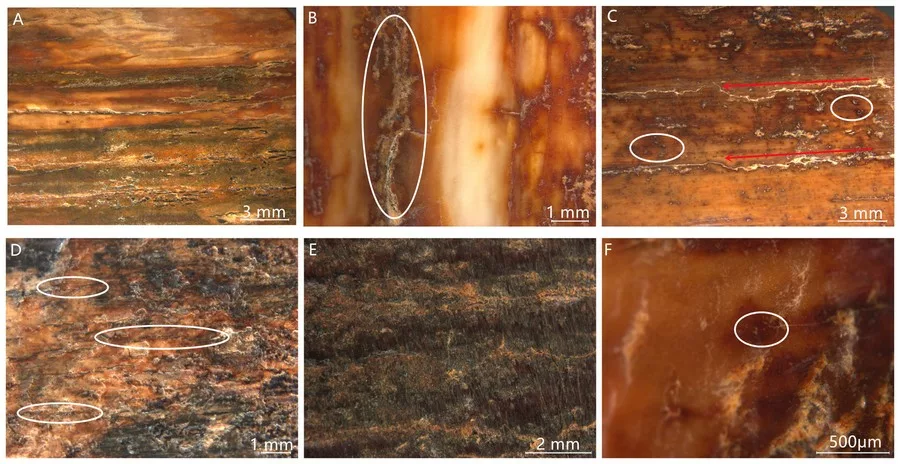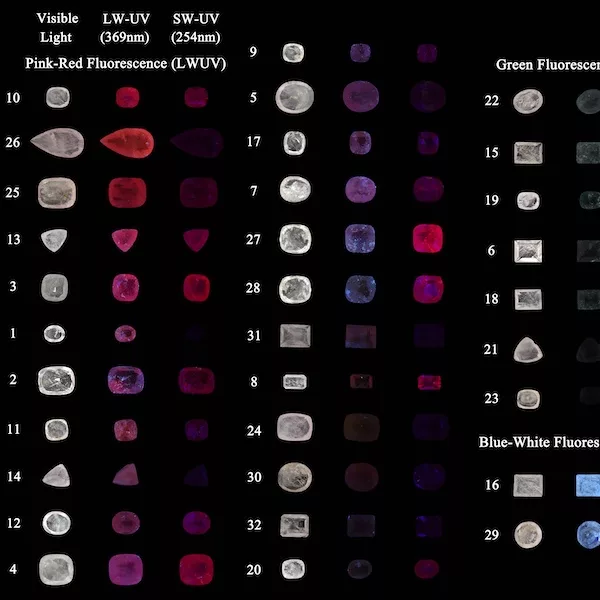Causes of color in brown mammoth ivory
The mammoth species were once the largest terrestrial mammals in the world during the late Pleistocene (approximately 350,000 to 10,000 years ago), inhabiting the northern hemisphere, starting in Europe and extending as far east as North America (Lister & Sher, 2001; Nogués-Bravo et al., 2008). Mammoth ivory has a long history of use in jewelry and artworks because of its beauty and pleasing texture (Saunders et al., 1989; Pitulko et al., 2015). Similar to elephant ivory, mammoth ivory exhibits fascinating colors and patterns and can take on a smoother polish than other organic raw materials. Due to various international bans on the sale of elephant ivory, mammoth ivory has gradually replaced it as an organic gemstone (Martin, 2006; Yin et al., 2013). To date, gemological studies of mammoth ivory have focused mainly on the material’s composition, the crystallographic characteristics of inorganic minerals within, and the means of separating it from elephant ivory (Qi et al., 2010; Wu et al., 2013; Ngatia et al., 2019; Sun et al., 2022). The surface of mammoth ivory usually has a brown color (Figure 1) but is occasionally blue to dark blue or even black. Research on the causes of this surface color is scarce, however.

In order to investigate the causes of this color, Fouriertransform infrared spectroscopy (FTIR), Powder X-ray diffraction (XRD), and scanning electron microscopy with energy-dispersive X-ray spectroscopy (SEM EDX) were used to study the samples’ spectroscopic and mineralogical characteristics, surface morphology, and chemical composition. Brown mammoth ivory is composed mainly of hydroxyapatite, carbonate hydroxyapatite, and collagen (Figure 2). With the dissolution and loss of organic matter and phosphate ions (PO43-), fissures and cracks formed. Hematite, pyrite, pyrolusite, and manganite crystallized on the mammoth ivory’s surface and concentrated in the cracks of the cementum layer. The phase transformation processes during the burial time promoted the formation of iron oxides, manganese oxides and hydroxides, and iron sulfide, which caused the brown surface color.

References:
- Gates-Rector S., Blanton T. 2019. The Powder Diffraction File: A quality materials characterization database. Powder Diffraction, 34(4), 352-360.
- Lister A.M., Sher A.V. 2001. The origin and evolution of the woolly mammoth. Science, 294, (5544), 1094–1097.
- Martin E. 2006 Are we winning the case for ivory substitutes in China? Pachyderm, 40, 89–101.
- Ngatia J.N., Lan T.M., Ma Y., Dinh T.D., Wang, Z., Dahmer T.D., Xu Y.C. 2019. Distinguishing extant elephants ivory from mammoth ivory using a short sequence of cytochrome b gene. Scientific Reports, 9, No. 18863.
- Rodríguez J., Hortal J., Batra P., Araújo M.B. 2008. Climate change, humans, and the extinction of the woolly mammoth. PLoS Biology, 6(4), 685–692.
- Pitulko V.V., Pavlova E.Y., Nikolskiy P.A. 2015. Mammoth ivory technologies in the Upper Palaeolithic: A case study based on the materials from Yana RHS, Northern Yana-Indighirka lowland, Arctic Siberia. World Archaeology, 47(3), 333–389.
- Qi L.J., Zhou Z.Y., Liao G.L., Lin S.S. 2010. Differences on growth microstructure and FTIR absorption spectra between mammoth teeth and ivory. Journal of Gems and Gemmology, 12(3), 1–4.
- Saunders J.J., Jr. Haynes C.V., Stanford D., Agogino G.A. 1989. A mammoth-ivory semifabricate from Blackwater Locality No. 1, New Mexico. American Antiquity, 55(1), 112–119.
- Sun X., He M., Wu J. 2022. Crystallographic characteristics of inorganic mineral in mammoth ivory and ivory. Minerals, 12(2), 117.
- Wu X., Zhang J., Lu X.H. 2013. Study on ivory and mammoth teeth. 2013 China Gems & Jewelry Academic Conference, 143–146.
- Yin Z.W., Zhang P.F., Chen Q.L., Luo, Q.F., Zheng C., Li Y.L. 2013. A comparison of modern and fossil ivories using multiple techniques. Gems & Gemology, 49(1), 16–27.




